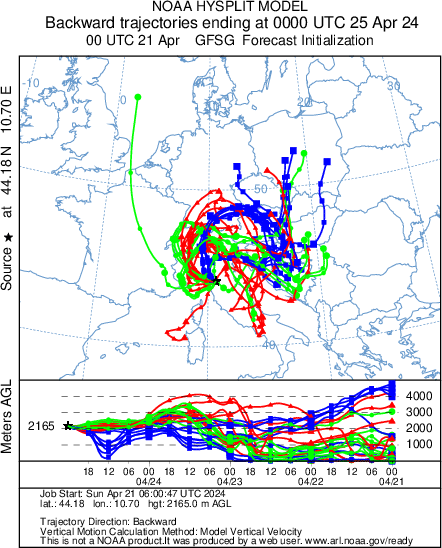Solar radiation
Starting date: 1-4-2004
Status: Running
Instrumentation and calibration: Solar radiation (wavelength: 350 – 1100 nm) and UV-B (wavelengths: 280-315 nm) are respectively measured by a commercial silicon cell pyranometer (Skye SKS110) and a silicon photodiode (Skye SKU 430), respectively. Calibrations were performed by factory against a WMO secondary standard pyranometer (for Skye SKS110) and against the National Physical Laboratory UK reference standard lamp (for for Skye SKU 430). These sensors are mounted on the highest point of the ICO-OV roof.
Project affiliation (s) Present: ACTRIS-2 Past: CEOP, SHARE, OZOMONT
Related research programmes
- Tropospheric background condition
- Long-range transport
- Saharan dust transport
- Polluted air-masses
Why is this research important? This research is important because solar radiation is a key parameter to define climate and also play a role in defining the chemical properties of the troposphere partially contributing in triggering photochemical reactions of important compounds (e.g. NO2). Moreover, solar radiation data can be used to evaluate the presence/development of clouds, thus providing important meteorological information for the interpretation of atmospheric compounds behaviours. Interactions with mineral aerosol from North Africa deserts or black carbon from combustion sources can strongly influence the radiative flux at the surface, thus leading to large radiative forcings. In particular, UV-B radiation is highly energetic. Even if most part of UV-B is shielded in the stratosphere by the O3 layer, a fraction still reach Earth surface. High levels of UV-B can be harmful for ecosystems and human health. Moreover, UV-B radiation is fundamental in determining the oxidative properties of the troposphere by leading O3 photo-dissociation and thus determining OH levels.
Quick look At ICO-OV noon, total solar radiation and UV-B were respectively characterised by average values of 457 ± 280 W m-2 and 0.82 ± 0.56 W m-2 during the period 2005 – 2009. On average, maximum average values are reached in July (641 ± 281 W m-2 and 1.33 ± 0.57 W m-2, respectively), while the lowest values (230 ± 153 W m-2 and 0.26 ± 0.14 W m-2, respectively), are observed in December.
Where can I find the data? By direct request to: p.cristofanelli [at] isac.cnr.it
Organization (s): ISAC-CNR Via Gobetti 101, I-40129, Bologna www.isac.cnr.it
Contact persons: Dr. Paolo Bonasoni e-mail: p.bonasoni [at] isac.cnr.it, phone: +39 051 6399590 Dr. Paolo Cristofanelli e-mail: p.cristofanelli [at] isac.cnr.it phone: +39 051 6399597




